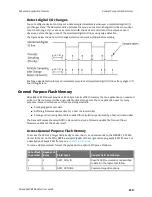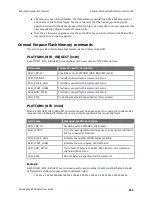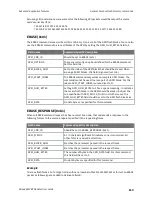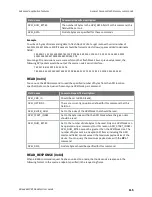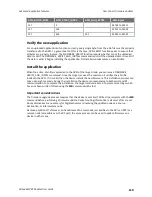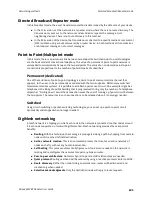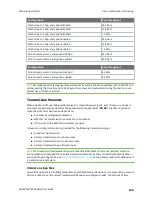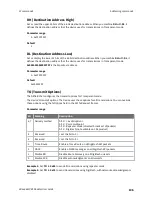
Networking methods
Networking concepts
XBee 868LP RF Modules User Guide
123
n
Sleep modes
Low power sleep modes with synchronized wake are supported with variable sleep and wake
times.
Networking concepts
This section provides information on configuring DigiMesh devices and network identifiers.
Device Configuration
You can configure DigiMesh devices to act as routers or end devices with the
CE
command. By default,
all devices in a DigiMesh network act as routers. Devices configured as routers actively relay network
unicast and broadcast traffic.
Network ID
DigiMesh networks are defined with a unique network identifier. Set the identifier using the
ID
command. For devices to communicate they must be configured with the same network identifier.
The
ID
parameter allows multiple DigiMesh networks to co-exist on the same physical channel.
Data transmission and routing
This section provides information on data transmission, routing, throughput, and transmission
timeouts.
Unicast addressing
When devices transmit using DigiMesh unicast, the network uses retries and acknowledgments
(ACKs) for reliable data delivery. In a retry and acknowledgment scheme, for every data packet that a
device sends, the receiving device must send an acknowledgment back to the transmitting device to
let the sender know that the data packet arrived at the receiver. If the transmitting device does not
receive an acknowledgment then it re-sends the packet. It sends the packet a finite number of times
before the system times out.
The
MR
(Mesh Network Retries) parameter determines the number of mesh network retries. The
sender device transmits RF data packets up to
MR
+ 1 times across the network route, and the
receiver transmits ACKs when it receives the packet. If the sender does not receive a network ACK
within the time it takes for a packet to traverse the network twice, the sender retransmits the
packet.
To send unicast messages while in Transparent operating mode, set the
DH
and
DL
on the
transmitting device to match the corresponding
SH
and
SL
parameter values on the receiving device.
Broadcast addressing
All of the routers in a network receive and repeat broadcast transmissions. Broadcast transmissions
do not use ACKs, so the sending device sends the broadcast multiple times. By default, the sending
device sends a broadcast transmission four times. The transmissions become automatic retries
without acknowledgments. This results in all nodes repeating the transmission four times as well.
In order to avoid RF packet collisions, the network inserts a random delay before each router relays
the broadcast message. You can change this random delay time with the
NN
parameter.
Sending frequent broadcast transmissions can quickly reduce the available network bandwidth. Use
broadcast transmissions sparingly.


